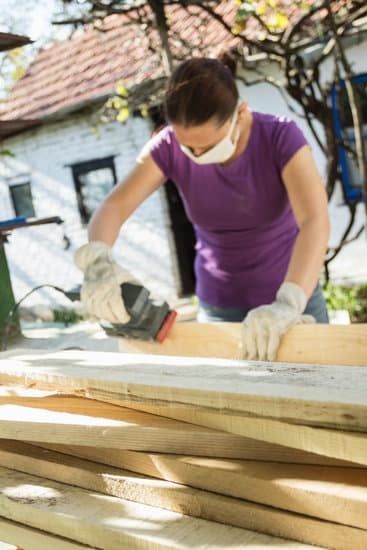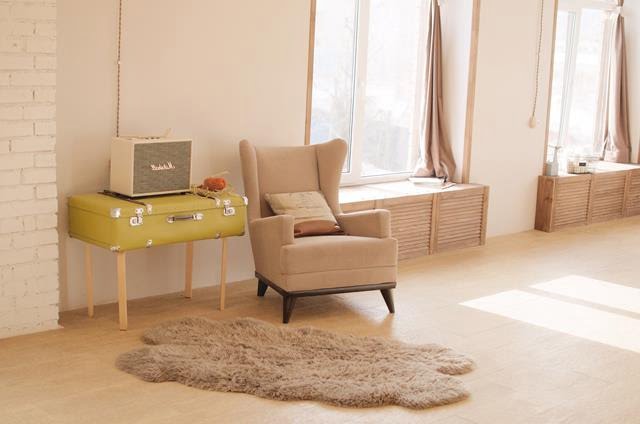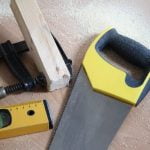Can you use a home improvement loan for anything? Home improvement loans are typically designed to fund renovations, repairs, and upgrades to your property. However, there are creative ways to use these loans beyond traditional home improvement projects. Understanding the purpose of home improvement loans and their potential uses can help homeowners make informed decisions about their financing options.
Home improvement loans serve the primary purpose of funding home renovation and repair projects. Whether you’re looking to remodel your kitchen, add a new bathroom, or upgrade your HVAC system, these loans can provide the financial support needed to make these improvements. But can you use a home improvement loan for anything else? The answer may surprise you.
While home improvement loans are intended for specific purposes, there are non-traditional ways to utilize this type of financing. From debt consolidation to financing special events like weddings or vacations, there are creative ways to make the most of a home improvement loan. However, it’s important for homeowners to carefully consider the implications of using these funds for unconventional purposes before making any decisions.
Understanding the Types of Home Improvement Loans Available
Home improvement loans can be a great way to fund renovations, repairs, or additions to your home. There are several types of home improvement loans available to homeowners, each with its own features and benefits. Here are some of the most common types of home improvement loans:
- Home equity loan: This type of loan allows homeowners to borrow money using the equity in their home as collateral. The interest rates on home equity loans can be lower than other types of loans, and the funds can be used for a variety of purposes, including home improvements.
- Home equity line of credit (HELOC): A HELOC is similar to a home equity loan, but instead of receiving a lump sum of money, borrowers have access to a line of credit that they can use as needed. This flexibility can be beneficial for homeowners who are not sure exactly how much they will need for their home improvement projects.
- Personal loan: Some homeowners may choose to use a personal loan to fund their home improvement projects. While personal loans typically have higher interest rates than home equity loans or HELOCs, they do not require any collateral and may be easier to qualify for.
When considering the types of home improvement loans available, it’s important for homeowners to carefully evaluate their options and choose the right loan for their specific financial situation and renovation needs.
It’s important to note that while these types of loans offer flexibility in terms of how the funds can be used, there may still be some restrictions on what the money can be used for. For example, some lenders may require that the funds be used solely for home improvements and not other expenses.
However, in many cases, as long as the improvements add value to the property or enhance its functionality or livability, homeowners can use a home improvement loan for anything related to their property’s enhancement.
The Restrictions and Limitations of Home Improvement Loans
When considering a home improvement loan, it’s important to understand that there are certain restrictions and limitations on how the funds can be used. While these loans are designed to help with renovations, repairs, and upgrades to your home, there are some guidelines that you’ll need to keep in mind.
Home-Specific Use
One of the main restrictions of a home improvement loan is that the funds must be used for improvements to your primary residence. This means that you cannot use the loan for investment properties or second homes. Additionally, some lenders may have specific guidelines on what types of improvements are eligible, so it’s important to clarify this before applying for the loan.
Contractor Requirements
In many cases, home improvement loans require that the work be completed by a licensed contractor. This ensures that the improvements are done properly and meet any building code requirements. As a result, you may not be able to use the funds for do-it-yourself projects or for hiring unlicensed individuals.
Lender Approval
Before using a home improvement loan for any specific purpose, it’s essential to check with your lender regarding their policies and approval process. Some lenders may have additional restrictions on how the funds can be used or may require documentation of the planned improvements before releasing the funds.
Overall, while home improvement loans offer flexibility in financing various projects around your home, it’s important to note that there are indeed limitations on how you can use these funds. Being informed about these restrictions will ensure that you make the most out of your home improvement loan without running into any unexpected issues during the process.
Creative Ways to Use a Home Improvement Loan
Home improvement loans are typically used for, well, home improvement projects. However, there are creative ways you can use a home improvement loan to enhance your living space beyond traditional renovations. Here are some imaginative ideas for how you can use a home improvement loan in unique and unconventional ways:
- Outdoor landscaping and hardscaping: Use the funds from a home improvement loan to create the backyard oasis of your dreams. This could include installing a patio, adding a fire pit, or creating beautiful landscaping features.
- Smart home technology: Upgrade your home with modern smart devices such as thermostats, security systems, and appliances. These enhancements not only improve your quality of life but also add value to your property.
- Energy-efficient upgrades: Invest in energy-efficient windows, doors, insulation, or solar panels to reduce utility bills and make your home more environmentally friendly.
Using a home improvement loan for these unconventional purposes can enhance your living space in ways that go beyond traditional renovations. However, before using a home improvement loan for non-traditional purposes, it’s important to consider the potential drawbacks and alternative options.
While there are many creative ways to use a home improvement loan for enhancing your living space, it is essential to keep in mind that there may be restrictions and limitations depending on the lender. Additionally, before embarking on any non-traditional projects with the funds from a home improvement loan, it’s crucial to carefully consider the potential return on investment and whether alternative financing options may be more suitable for your specific needs.
The Benefits of Using a Home Improvement Loan for Home Projects
Many homeowners wonder, “Can you use a home improvement loan for anything?” While there are some restrictions and limitations on how home improvement loans can be used, there are also many benefits to using these loans for specific home projects. One of the main benefits of using a home improvement loan for home projects is that it allows homeowners to make necessary repairs, upgrades, or renovations without having to dip into their savings or use high-interest credit cards.
By using a home improvement loan for home projects, homeowners can increase the value of their property. Whether it’s updating an outdated kitchen, adding another bathroom, or replacing old windows with energy-efficient ones, these improvements can significantly enhance the overall value of the home. This can be especially beneficial if homeowners plan on selling their property in the future as they can potentially recoup the costs of the renovations through a higher sale price.
Furthermore, using a home improvement loan for specific home projects provides homeowners with the opportunity to create a more comfortable and functional living space. Making enhancements like installing central air conditioning or remodeling a basement into a usable living area can significantly improve the quality of life for those residing in the home. With the right improvements, homeowners may also see a decrease in their utility bills and maintenance costs over time.
| Benefit | Description |
|---|---|
| Financial Flexibility | Allows homeowners to make necessary repairs without depleting savings. |
| Increased Property Value | Renovations can enhance overall value and potentially lead to higher sale prices. |
| Improved Quality of Life | Enhancements create more comfortable living spaces and potential decrease in utility bills. |
Things to Consider Before Using a Home Improvement Loan for Non-Traditional Purposes
Understanding the Purpose of Home Improvement Loans
Home improvement loans are designed specifically for funding home improvement projects such as renovations, repairs, or upgrades. These loans are meant to increase the value of your home and improve its overall quality. Before considering using a home improvement loan for non-traditional purposes, it’s important to understand the intended purpose of these loans.
Evaluating the Financial Implications
While home improvement loans offer favorable interest rates and terms, it’s crucial to consider the financial implications of using such a loan for non-traditional purposes. Using the loan for expenses unrelated to home improvement could impact your ability to recover that investment in the future. It’s essential to carefully evaluate whether the potential benefits outweigh the long-term financial repercussions.
Considering Alternative Financing Options
Before deciding to use a home improvement loan for non-traditional purposes, it’s worth exploring alternative financing options. Personal loans or lines of credit may provide more flexibility in how the funds are used without impacting the value of your home.
Additionally, borrowing against other assets or seeking assistance from family members can also be viable alternatives. Taking the time to consider these options can help make an informed decision about utilizing a home improvement loan beyond its intended scope.
Steps to Applying for a Home Improvement Loan
A home improvement loan is a type of financing that homeowners can use to fund renovation and remodeling projects. However, it may surprise some people to learn that these loans can actually be used for a variety of purposes beyond just home improvements. While the primary purpose of a home improvement loan is to upgrade or repair your property, there are creative ways you can use this financing to meet other financial needs.
One common non-traditional use for a home improvement loan is debt consolidation. If you have high-interest debts like credit card balances or personal loans, you can use the funds from a home improvement loan to pay off those debts. By consolidating your debt with a lower interest rate loan, you can save money on interest and simplify your monthly payments.
Another creative way to utilize a home improvement loan is for educational expenses. Whether you’re looking to further your own education or help pay for your child’s college tuition, the funds from a home improvement loan can help cover the costs. This can be particularly beneficial if you’re able to secure a lower interest rate with a home improvement loan compared to traditional student loans.
Additionally, using a home improvement loan for unexpected expenses such as medical bills or emergency car repairs can provide homeowners with much-needed financial assistance during challenging times.
| Purpose | Examples |
|---|---|
| Debt Consolidation | Consolidating high-interest debts such as credit cards or personal loans |
| Educational Expenses | Funding further education or covering college tuition costs |
| Unexpected Expenses | Using funds for medical bills or emergency car repairs |
Alternatives to Using a Home Improvement Loan for Unconventional Purposes
In conclusion, while home improvement loans are primarily designed to fund renovations and repairs for your property, there are creative ways to use these funds for other purposes. However, it is important to carefully consider the implications of using a home improvement loan for non-traditional projects. These loans are typically secured by the value of your home, so using them for other expenses could put your property at risk if you default on the loan.
Before deciding to use a home improvement loan for unconventional purposes, it is crucial to weigh the potential benefits against the risks involved. While these loans can be used for things like debt consolidation or personal expenses, there are alternative financing options available that may be more suitable and less risky. Additionally, it is important to carefully consider whether the expense aligns with your long-term financial goals and whether there are more cost-effective ways to fund the project.
Ultimately, while a home improvement loan can provide a convenient source of funding for a variety of expenses beyond traditional home improvements, it is essential to thoroughly evaluate all options before making a decision. By understanding the restrictions and limitations of these loans and exploring alternative financing solutions, you can make an informed choice that aligns with your financial needs and goals.
So, can you use a home improvement loan for anything? While technically possible, it may not always be the best or most prudent choice.
Frequently Asked Questions
Can You Use a Home Improvement Loan for Other Things?
Home improvement loans are typically designed to be used specifically for projects that improve the value of your home, such as renovations, repairs, or additions. Using this loan for other purposes may not be allowed by the lender.
Can You Use a Home Loan for Anything Else?
A home loan, often referred to as a mortgage, is usually intended for purchasing a property or refinancing an existing mortgage. While some types of home loans may offer cash-out refinancing options, these funds should still be used for housing-related expenses.
Are Home Improvement Loans Tax-Deductible?
In many cases, interest paid on a home improvement loan can be tax-deductible if the loan was used to make “capital improvements” to your home. However, it’s important to consult with a tax professional to determine if your specific situation qualifies for this deduction and to understand any limitations that may apply.

I’m thrilled to have you here as a part of the Remodeling Top community. This is where my journey as an architect and remodeling enthusiast intersects with your passion for transforming houses into dream homes.





